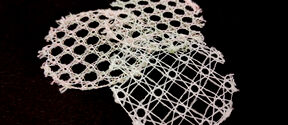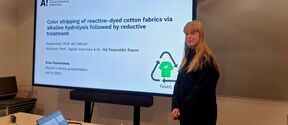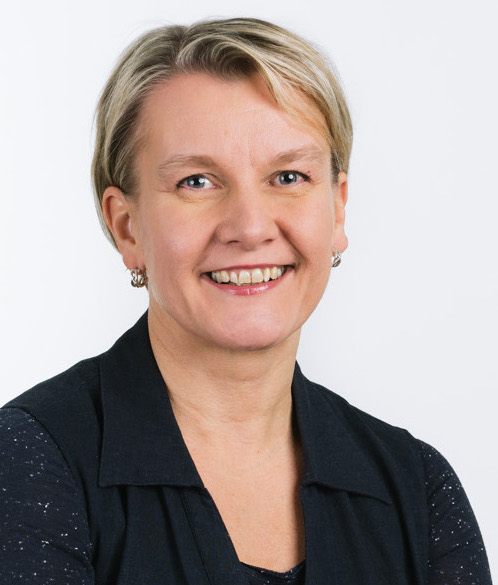Design solutions for the maritime industry - the revolutionary transition to remote shipping

Robotics and artificial intelligence are revolutionizing maritime operations as ships will be operated from shore and crew members become specialists in remote control centers.
At the heart of the INTERREMOTE research project are human-centered design and experience design. The joint goal is to design user interfaces for remote operation tools that create a positive work experience. Design opens doors to how artificial intelligence, robots, and employees can work as a team, and how employees communicate with these new colleagues.
Maritime industry giant Kongsberg Maritime is a pioneer in the remote control of unmanned vessels. The two-year INTERREMOTE project continues the research collaboration between Aalto University Department of Design and Kongsberg.
"It is extremely interesting to collaboratively explore what the future of work in maritime operations might look like. We are developing user interfaces that put maritime workers at the center and that enrich the work, keeping it engaging and meaningful," says Virpi Roto, Senior University Lecturer at Aalto University.
"Aalto University's design expertise and understanding of new theories are of paramount importance to us as we develop high-tech solutions for remote control of ships, with people at the centre." says Markus Laurinen, SVP Growth and Solutions at Kongsberg Maritime.
Markus Laurinen, SVP Growth and Solutions, Kongsberg MaritimeAalto University's design expertise and understanding of new theories are of paramount importance to us as we develop high-tech solutions for remote control of ships, with people at the centre.
Humans and AI combine to optimize vessel routing
The transition to remote control centers is revolutionizing the maritime work environment and the nature of the work itself.
"On a ship, workers are in close contact with each other, and the importance of interpersonal relationships is emphasized, especially during long voyages. Through design, we are looking for ways to maintain social cohesion, even when the work is done from remote control centers or from home," Roto explains.
The transition requires new operational models, as in the future, a captain may be responsible for multiple vessels sailing at sea.
Autonomous maritime operations will begin with cargo ships, where voyage planning seeks to identify the optimal ship type for transporting specific cargo. Optimal route selection minimizes fuel consumption. Scheduling becomes crucial, as energy-efficient ships sail more slowly.
"We developed user interface concepts where humans and artificial intelligence collaboratively seek energy-efficient and sustainable solutions for route planning," Roto continues.
Design research boosts business performance
Aalto University Department of Design has long-term expertise in developing interactions between humans and AI system.
“When designing AI systems, it is important to ensure that they support the meaningfulness of work and the wellbeing of employees, even if some tasks are automated," Roto emphasizes.
The deep understanding of human behaviour and technology interfaces provided by academic research is the foundation for new industrial applications.
"Understanding the end-user is crucial to creating efficient and safe environments. The INTERREMOTE project aims to create environments that people want to work in and that meet the needs of our customers," says Laurinen from Kongsberg Maritime.
The project has produced three Master's theses, supervised by Antony William Joseph, a postdoctoral researcher at Aalto University. The research has provided Aalto students with a unique opportunity to learn about the design processes of a large company.
"Working closely with Kongsberg Maritime's designers has opened the students' eyes to the possibilities of digital design when they are tasked with creating completely new user interfaces for a major player in the maritime industry," says Roto.
Text: Marjukka Puolakka
Further information, please contact
Research collaboration strengthens expertise and future business development. New product and service ideas are created in study projects. Our campus offers an inspiring operating and networking environment. At Aalto's recruitment events, companies meet the top talents of the future.
One of the most prestigious universities in its fields. We educate our students to create imaginative, collaborative, compassionate and unconventional approaches to the most pressing challenges of today.
The Department of Design is a diverse community of competent, creative and responsible individuals. In design, we appreciate technical skill, social significance and artistic expression.
Read more news

Smart textiles are reshaping our understanding of materials – and interspecies communication
The PAST-A-BOT research project, funded by the European Research Council (ERC), is developing soft, intelligent textiles that could one day function as rescue robots, sound-sensing agricultural fabrics, or assistive clothing. At the same time, the project aims to rethink the way we approach materials research.
Master’s student showcases efficient color stripping of cotton fabrics
On December 9, master’s thesis student Elsa Vuorenmaa from the Textile Chemistry Group presented the results of her research on color stripping of reactive-dyed cotton fabrics.
Future makers research batteries, cryptography and plastic recycling
The Technology Industries of Finland Centennial Foundation awarded 3.5 million euros in research funding to eight projects, five from Aalto University.







